ATI custom pharmacology Exam 2
Total Questions : 42
Showing 25 questions, Sign in for moreA nurse Is teaching a client who Is taking metronidazole. Which of the following sense alterations should the nurse Include as an adverse effect of metronidazole?
Explanation
Metronidazole is an antibiotic medication that is commonly used to treat infections caused by anaerobic bacteria and protozoa. One of the most common adverse effects of metronidazole is a metallic taste in the mouth, which can occur in up to 20% of patients taking the medication. This taste alteration can be unpleasant, but it is generally not serious and should go away once the medication is stopped.
While metronidazole can rarely cause some neurological side effects such as peripheral neuropathy (numbness, tingling, or pain in the hands or feet), it does not typically cause hearing loss, alterations in touch, or olfactory changes. It is important for the nurse to educate the client about the potential side effects of metronidazole, including the metallic taste, and to encourage the client to report any adverse effects that occur while taking the medication.
A nurse is teaching a client who has a new prescription for erythromycin. Which of the following Information should the nurse include?
Explanation
When teaching a client who has a new prescription for erythromycin, the nurse should include the
following information:
- Erythromycin is an antibiotic used to treat bacterial infections.
- Take the medication exactly as prescribed and complete the full course of treatment.
- Take the medication with a glass of water on an empty stomach, unless otherwise directed by the healthcare provider.
- Do not take the medication with grapefruit juice or any other citrus fruit juice. Grapefruit juice can increase the levels of erythromycin in the blood, which can lead to serious side effects.
- Watch for signs of an allergic reaction, such as rash, itching, swelling, dizziness, or difficulty
breathing, and report them to the healthcare provider immediately.
- Report any new or worsening symptoms to the healthcare provider, including abdominal pain, diarrhea, or bloody stools.
- Do not take any other medications or supplements without first checking with the healthcare
provider, as they may interact with erythromycin.
Therefore, option D is the correct answer as it provides essential information about grapefruit juice interaction with erythromycin. Option A is incorrect because ringing in the ears is not a common side effect of erythromycin. Option B is also incorrect because skin turning yellow is not a common side effect of erythromycin. Option C is also incorrect because erythromycin does not commonly cause constipation.
A nurse is caring for a client who has a bacterial infection and is receiving gentamicin. Which of the following actions should the nurse take to minimize the risk of an adverse effect of the medication?
Explanation
Cyclosporine is an immunosuppressant medication that is often used following organ transplant to prevent rejection. Grapefruit juice can increase the absorption of cyclosporine, leading to an increased risk of side effects and toxicity. Therefore, clients taking cyclosporine should be advised to avoid grapefruit and grapefruit juice while taking this medication. Pepperoni and smoked salmon do not have any known interactions with cyclosporine. Orange juice may also interact with cyclosporine, but not to the same extent as grapefruit juice. It is generally recommended that clients taking cyclosporine avoid drinking large amounts of orange juice and to inform their healthcare provider if they experience any adverse effects.
A nurse manager is providing an educational program on antibiotic sensitivity to bacterial infections. The nurse should include in the teaching that metronidazole is Indicated for which of the following infections?
Explanation
Metronidazole is an antibiotic that is effective against anaerobic bacteria and protozoa. It is not effective against Gram-negative bacteria such as Pseudomonas aeruginosa or Klebsiella, nor is it effective against fungi such as Candida. However, it is the drug of choice for the treatment of Trichomoniasis vaginalis, a common sexually transmited infection caused by a protozoan parasite. Therefore, the nurse should include in the teaching that metronidazole is indicated for the treatment of Trichomoniasis vaginalis.
A nurse at an ophthalmology clinic Is providing teaching to a client who has open-angle glaucoma and a new treatment regimen of timolol and pilocarpine eye drops. Which of the following instructions should the nurse provide?
Explanation
According to Mayo Clinic, if you are using more than one eye product, you should apply these medicines at least 5 minutes apart1. None of the other options are listed as instructions for administering timolol and pilocarpine eye drops.
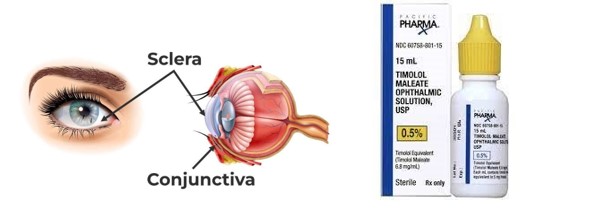
A nurse is caring for a client who has developed gout. Which of the following medications should the nurse prepare to administer?
Explanation
Gout is a type of arthritis caused by a build-up of uric acid crystals in the joints, leading to inflammation, pain, and swelling. Allopurinol is a medication used to treat gout by reducing the production of uric acid in the body. It works by inhibiting the enzyme xanthine oxidase, which is responsible for producing uric acid.
Option a, Alprazolam, is a medication used to treat anxiety and panic disorders. It is not used in the treatment of gout.
Option b, Spironolactone, is a medication used to treat high blood pressure, edema, and certain types of hormonal imbalances. It is not used in the treatment of gout.
Option c, Zolpidem, is a medication used to treat insomnia. It is not used in the treatment of gout.

A nurse is preparing to administer medications to a client who states. "I don't want to take those drugs.’ Which of the following actions should the nurse take?
Explanation
It is important for the nurse to understand the client’s concerns and reasons for refusing the medication. This can help the nurse address any misunderstandings or fears the client may have and provide appropriate education and support. The other options may also be appropriate actions for the nurse to take, but understanding the client’s perspective is an important first step.
A nurse is caring for a child who is allergic to penicillin. The nurse should verify which of the following prescriptions with the provider?
Explanation
According to UpToDate, cross-reactivity between penicillins and other beta-lactam antibiotics such as cephalosporins can occur in some cases. Amoxicillin is a type of penicillin, so the nurse should verify this prescription with the provider to ensure that it is safe for the client to take.
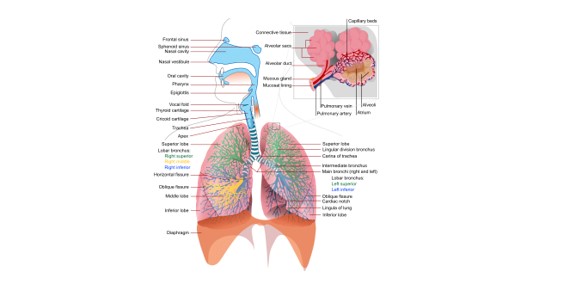
Which assessment Is most important for the nurse to obtain when a patient is being treated with a neuromuscular-blocking agent?
Explanation
Neuromuscular-blocking agents paralyze the muscles, including the respiratory muscles. Therefore, it is crucial to ensure that the patient maintains a patent airway and is able to breathe effectively. The nurse should monitor the patient's respiratory rate, depth, and effort, as well as assess for signs of airway obstruction, such as stridor or wheezing.
Skin assessment for rash (option b), blood pressure assessment for orthostatic hypotension (option c), and assessment for fluid volume overload (option d) may also be important assessments for the nurse to obtain, but they are not the most critical assessments when a patient is being treated with a neuromuscular-blocking agent.
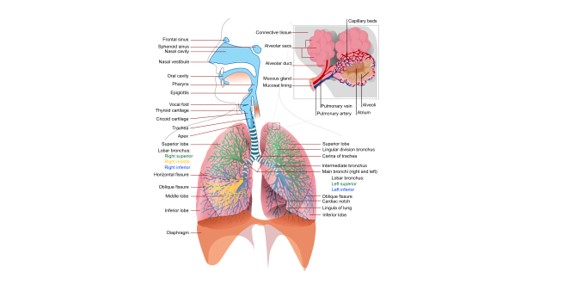
A nurse is preparing to administer cephalexin oral suspension to an older adult client who has difficulty swallowing pills. Which of the following actions should the nurse take?
Explanation
Cephalexin is an oral antibiotic medication used to treat bacterial infections. In this scenario, the client has difficulty swallowing pills, so the medication is provided in oral suspension form. When administering oral suspension medication, it is important to ensure that the medication is evenly mixed before giving it to the client. However, shaking the medication vigorously can result in the formation of bubbles that can make it difficult to accurately measure the correct dose. Instead, the nurse should gently swirl the medication to ensure that it is evenly mixed.
Option A is incorrect because while storing the medication at room temperature is important, it does not directly relate to administering it to the client.
Option C is incorrect because while checking the client for a penicillin allergy is an important step in administering antibiotics, it does not directly relate to administering cephalexin.
Option D is incorrect because monitoring for constipation is not a relevant action in administering cephalexin. Constipation is not a known side effect of this medication.
A nurse is teaching a client who has multiple sclerosis and a new prescription for dantrolene. Which of the following statements by the client indicates an understanding of the teaching?
Explanation
Dantrolene is a medication used to treat muscle spasticity in conditions such as multiple sclerosis. It works by directly affecting the muscle fibers, causing them to relax. It is not recommended to take an over-the-counter antihistamine while taking dantrolene without first consulting with a healthcare provider, as this may cause increased drowsiness and other side effects.
Muscle strength may not necessarily improve significantly with dantrolene use. It is also important to note that dantrolene may cause photosensitivity, so it is recommended to apply sunscreen when going outside to prevent sunburn and skin damage.
The correct statement that indicates an understanding of the teaching is that the client should take this medication when their spasms are bad. This indicates that the client understands the purpose of the medication and how to use it effectively to manage their symptoms.
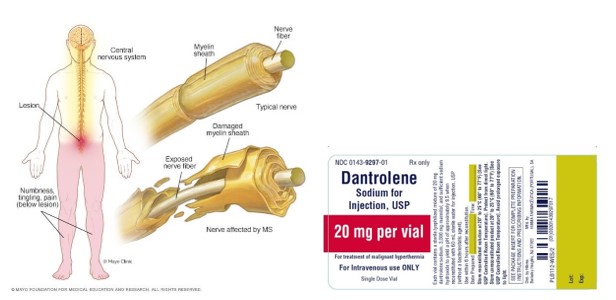
A nurse manager is providing an educational program on antibiotic sensitivity to bacterial infection. The nurse should include in the teaching that vancomycin is Indicated for which of the following infections?
Explanation
Vancomycin is a glycopeptide antibiotic that is effective against gram-positive bacteria, particularly against MRSA, which is resistant to other antibiotics like methicillin. It is not effective against gram-negative bacteria such as Pseudomonas aeruginosa and Klebsiella. Candida is a fungal infection and is not treated with vancomycin. Therefore, in this educational program, the nurse manager should emphasize that vancomycin is indicated for the treatment of infections caused by MRSA.

A nurse In a community health clinic is administering seasonal inactive influenza vaccine. Before
administering it, the nurse must confirm that the client is not allergic to which of the following:
Explanation
Influenza vaccine production involves growing the virus in eggs. Therefore, the vaccine may contain trace amounts of egg proteins. Some individuals may be allergic to egg proteins and may experience an allergic reaction after receiving the vaccine. For this reason, healthcare providers should always ask their patients about egg allergies before administering the influenza vaccine.
Yeast, gelatin, and shellfish are not typically present in the seasonal inactive influenza vaccine, so allergy to these substances is not a concern when administering the vaccine. However, if a person has a known allergy to any of the ingredients in the vaccine, they should inform their healthcare provider before receiving it.

A nurse is reviewing the medical record of a client who is to receive the first dose of cefoxitin, a cephalosporin via intermitent IV bolus Which of the following findings should the nurse Identify as a contraindication for the client to receive cefoxitin and report to the provider?
Explanation
Cefoxitin is a cephalosporin antibiotic and can cause allergic reactions in people who are allergic to penicillin or other beta-lactam antibiotics like amoxicillin. Therefore, a severe allergy to amoxicillin is a contraindication for the client to receive cefoxitin, and the nurse should report this finding to the provider immediately.
A recent history of diarrhea for three days is not a contraindication for cefoxitin administration. However, the nurse should monitor the client for signs of diarrhea and report any worsening symptoms to the provider.
A serum creatinine level of 0.8 mg/dL is within the normal range and is not a contraindication for cefoxitin administration.
A history of phlebitis following an IV infusion of 0.9% sodium chloride with 10 mEq potassium chloride is not a contraindication for cefoxitin administration. However, the nurse should assess the client's veins carefully before administering the medication and choose a different site or route for administration if necessary.
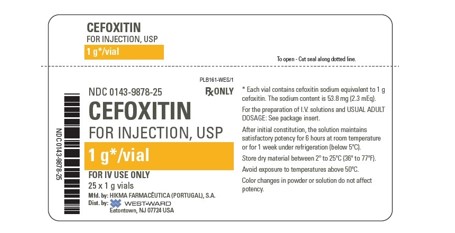
A nurse is reviewing guidelines for prophylactic antibiotics. The nurse should Identify that prophylactic antibiotic therapy is not recommended for which of the following clients?
Explanation
Prophylactic antibiotics are antibiotics given to prevent an infection from occurring. They are often used in situations where there is a high risk of infection, such as during surgery or dental procedures. However, prophylactic antibiotics are not recommended for all clients.
Option b is a situation where prophylactic antibiotics are recommended. Clients with prosthetic heart valves are at an increased risk of developing infective endocarditis (infection of the heart lining) during dental procedures due to the risk of bacteria entering the bloodstream.
Option c is another situation where prophylactic antibiotics may be used. Clients who have had an emergency cesarean section are at an increased risk of developing post-operative infections, and prophylactic antibiotics may be given to prevent this.
Option d is also a situation where prophylactic antibiotics may be used. Total hip arthroplasty is a surgical procedure that involves replacing the hip joint with a prosthesis. Clients who undergo this procedure are at an increased risk of developing a surgical site infection, and prophylactic antibiotics may be given to prevent this.
Option a, on the other hand, does not warrant prophylactic antibiotics. A fever of unknown origin does not necessarily indicate an infection, and antibiotics should only be given when there is a confirmed bacterial infection. Inappropriate use of antibiotics can lead to antibiotic resistance and other adverse effects.
A nurse is providing teaching to a client who has a skin infection and a new prescription for gentamicin topical cream. Which of the following instructions should the nurse provide?
Explanation
According to Mayo Clinic, before applying gentamicin topical cream, one should wash the affected area with soap and water and dry thoroughly. Then apply a small amount to the affected area and rub in gently.
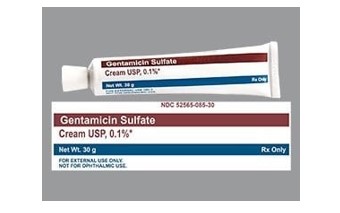
A nurse is administering oral medication to an older adult client. The client states, "The pill I always take is green. I don't take an orange pill." Which of the following responses should the nurse make?
Explanation
When a client expresses confusion or uncertainty about their medication, the nurse should always verify the medication order to ensure that the correct medication is being administered. Option (a) is the best response in this scenario because it addresses the client's concern and ensures the medication being given is the correct one.
Option (b) stating that "this is the medication that your doctor wants you to take" does not address the
client's concern and may cause the client to feel dismissed.
Option (c) suggesting to "let me explain the purpose of the medication" is not necessary at this time since
the client is already aware of the purpose and is only concerned about the colour of the pill.
Option (d) stating that "sometimes the same pill comes in a different colour" is not appropriate because it does not address the issue of the client's confusion about the current pill being administered.
A nurse is caring for a client who is receiving mydriatic eye drops. Which of the following manifestations indicate to the nurse that the client has developed a systemic anticholinergic effect?
Explanation
Mydriatic eye drops can cause systemic anticholinergic effects 1. Anticholinergic drugs block the action of acetylcholine, a neurotransmitter that transfers signals between cells to affect how your body functions 2. This can lead to side effects such as decreased digestion 2, which can result in constipation.

A nurse is assessing a client who is taking oxacillin to treat an infection. The nurse should recognize which of the following findings is a manifestation of an allergic reaction?
Explanation
An allergic reaction can occur in response to medication, and oxacillin is known to have the potential for causing allergic reactions. Symptoms of an allergic reaction may include rash, hives, itching, swelling, difficulty breathing, and anaphylaxis. Fever, amber urine, and diarrhoea are not typically associated with an allergic reaction to oxacillin.
Therefore, the nurse should monitor the client for any signs of an allergic reaction, particularly pruritus or itching, and report them to the healthcare provider promptly.
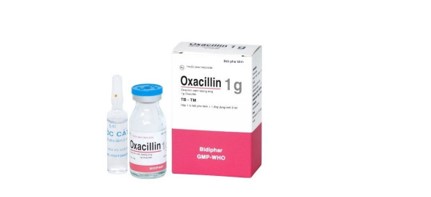
A nurse is caring for a client who has a fungal infection and is given a new prescription for amphotericin B. Which of the following laboratory values should the nurse report to the provider before initiating the medication?
Explanation
BUN stands for Blood Urea Nitrogen, and it is a laboratory test that measures the amount of nitrogen in the blood that comes from urea, which is a waste product of protein metabolism. Elevated BUN levels indicate impaired kidney function. Amphotericin B is known to be potentially nephrotoxic, which means that it can cause damage to the kidneys. Therefore, the nurse should report an elevated BUN level to the provider before initiating the medication to ensure the safety of the client. Potassium, glucose, and sodium levels are within normal range and do not require intervention in this scenario.

A nurse is teaching a client about taking diphenhydramine. The nurse should explain to the client that which of the following is an adverse effect of this medication?
Explanation
Diphenhydramine is an antihistamine that can cause anticholinergic side effects 1. One of these side effects is constipation 21. The nurse should explain to the client that constipation is an adverse effect of this medication.
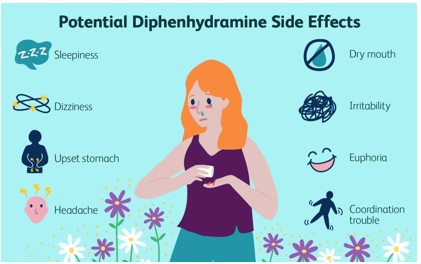
The nurse is preparing a medication for a client and observes the date of expiration on the vial occurred 2 months ago. Which of the following actions should the nurse take?
Explanation
The nurse should discard the medication because it has passed the expiration date. Expired medications may not be as effective or safe as they were when they were first manufactured. The nurse should not give the medication to the client or return it to the pharmacy. The nurse should also notify the provider about the expired medication to ensure that the client receives appropriate treatment. It is important for the nurse to follow the institution's policies and procedures for disposing of expired medications.
A nurse is teaching a client who has a urinary tract infection (UTI) and is taking ciprofloxacin. Which of the following instructions should the nurse give to the client?
Explanation
Ciprofloxacin is a fluoroquinolone antibiotic that can cause tendon problems 1. The nurse should instruct the client to report any tendon discomfort while taking this medication.
'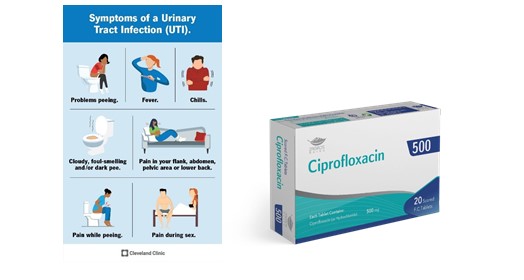
A nurse is providing teaching to a client who has gout and a new prescription for allopurinol. Which of the following statements by the client indicates an understanding of the teaching?
Explanation
Allopurinol is a medication used to decrease levels of uric acid in people with gout, or kidney stones, or who are receiving certain types of chemotherapy1. Increasing fluid intake while taking this medication can help prevent the formation of kidney stones.

A nurse is administering timolol eye drops to a client who has glaucoma. Which of the following actions should the nurse take?
Explanation
When administering timolol eye drops, the nurse should first wash their hands and then tilt the client’s head back. The nurse should then gently pull the lower eyelid away from the eye to create a space and drop the prescribed amount of medication into the conjunctival sac. After administering the eye drops, the nurse should apply gentle pressure to the inner corner of the eye for 1-2 minutes to allow the medication to be absorbed by the eye.
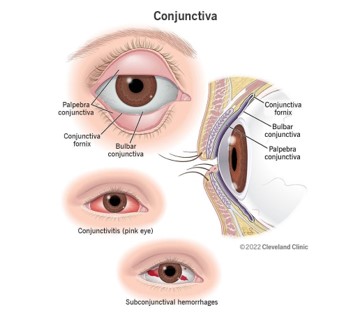
Sign Up or Login to view all the 42 Questions on this Exam
Join over 100,000+ nursing students using Nursingprepexams’s science-backend flashcards, practice tests and expert solutions to improve their grades and reach their goals.
Sign Up Now

